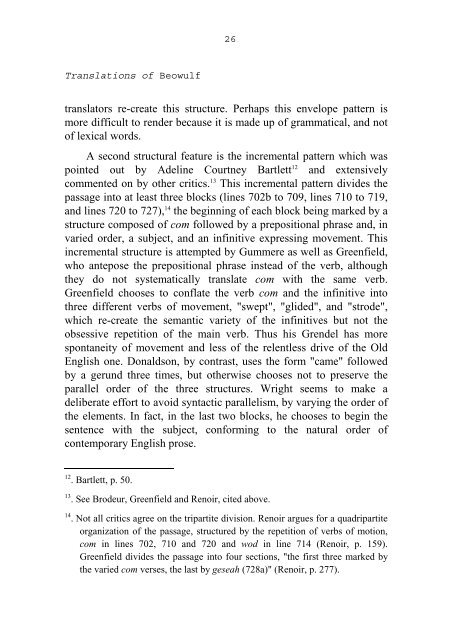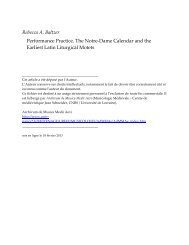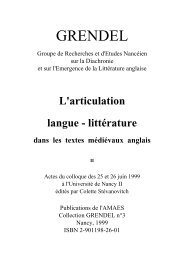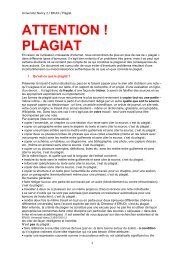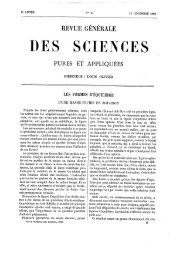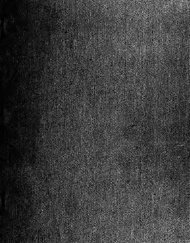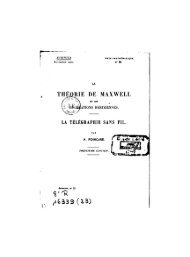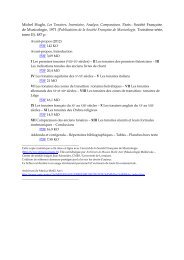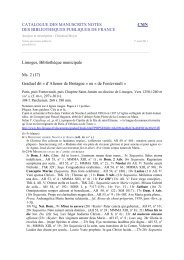3Harding-Mathieu - Université Nancy 2
3Harding-Mathieu - Université Nancy 2
3Harding-Mathieu - Université Nancy 2
You also want an ePaper? Increase the reach of your titles
YUMPU automatically turns print PDFs into web optimized ePapers that Google loves.
Translations of Beowulf<br />
26_(12U<br />
translators re-create this structure. Perhaps this envelope pattern is<br />
more difficult to render because it is made up of grammatical, and not<br />
of lexical words.<br />
A second structural feature is the incremental pattern which was<br />
pointed out by Adeline Courtney Bartlett 12 and extensively<br />
commented on by other critics. 13 This incremental pattern divides the<br />
passage into at least three blocks (lines 702b to 709, lines 710 to 719,<br />
and lines 720 to 727), 14 the beginning of each block being marked by a<br />
structure composed of com followed by a prepositional phrase and, in<br />
varied order, a subject, and an infinitive expressing movement. This<br />
incremental structure is attempted by Gummere as well as Greenfield,<br />
who antepose the prepositional phrase instead of the verb, although<br />
they do not systematically translate com with the same verb.<br />
Greenfield chooses to conflate the verb com and the infinitive into<br />
three different verbs of movement, "swept", "glided", and "strode",<br />
which re-create the semantic variety of the infinitives but not the<br />
obsessive repetition of the main verb. Thus his Grendel has more<br />
spontaneity of movement and less of the relentless drive of the Old<br />
English one. Donaldson, by contrast, uses the form "came" followed<br />
by a gerund three times, but otherwise chooses not to preserve the<br />
parallel order of the three structures. Wright seems to make a<br />
deliberate effort to avoid syntactic parallelism, by varying the order of<br />
the elements. In fact, in the last two blocks, he chooses to begin the<br />
sentence with the subject, conforming to the natural order of<br />
contemporary English prose.<br />
12 . Bartlett, p. 50.<br />
13 . See Brodeur, Greenfield and Renoir, cited above.<br />
14 . Not all critics agree on the tripartite division. Renoir argues for a quadripartite<br />
organization of the passage, structured by the repetition of verbs of motion,<br />
com in lines 702, 710 and 720 and wod in line 714 (Renoir, p. 159).<br />
Greenfield divides the passage into four sections, "the first three marked by<br />
the varied com verses, the last by geseah (728a)" (Renoir, p. 277).


